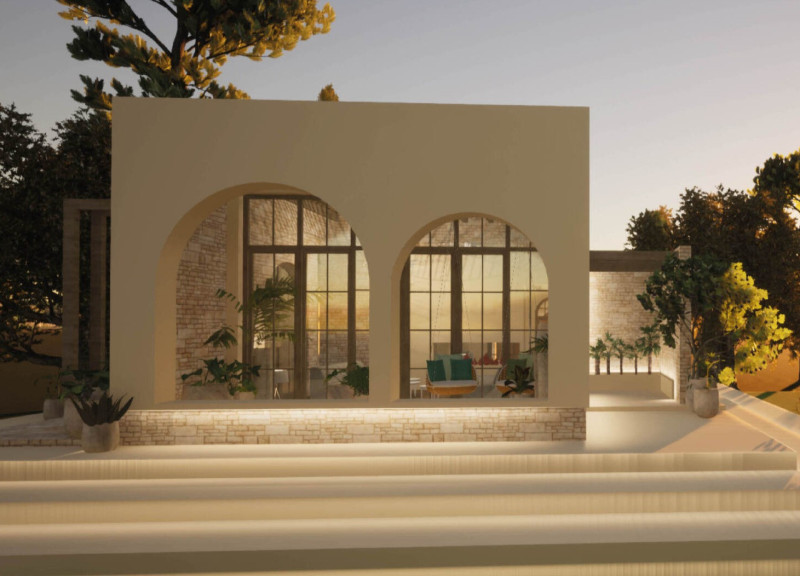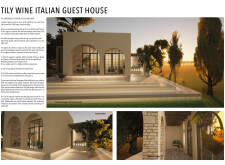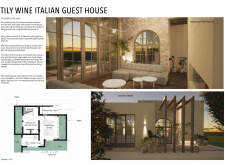5 key facts about this project
Tily Wine Italian Guest House is located in the scenic region of Umbria, Italy. Its design reflects a blend of modern architecture and traditional Italian hospitality. This guest house serves as a retreat, highlighting communal living while allowing for personal privacy. The design captures the spirit of Italian life, encouraging connection and interaction among guests.
Architecture Concept
The design of Tily Wine Italian Guest House takes inspiration from the natural landscape. It integrates the surrounding vineyards and hills into the overall structure. The layout promotes social interaction with areas designed for guests to come together. Entering the house through an arched gate leads directly to a central courtyard, creating an inviting first impression.
Living Spaces
Inside, the guest house features spacious living areas with high ceilings and large windows. These elements invite natural light and offer views of the courtyard and landscape. The open design encourages a relaxed atmosphere, allowing guests to enjoy quiet time or gather with others. Comfort is key, whether sitting by the fireplace or mingling in a shared space.
Private Accommodations
The private sections of the guest house include open bathrooms and roomy walk-in closets. These areas are designed to provide a sense of comfort and luxury. The arrangement of space promotes intimacy, with a centrally located fireplace connecting the living and sleeping areas. This thoughtful design enables both personal downtime and social engagement.
Outdoor and Communal Areas
Outdoor spaces enhance the communal experience. A northern terrace and sun deck provide spots for relaxation and gathering. The sun deck, situated under an olive tree, serves as a focal point for guests. Nearby, a natural pool offers recreational opportunities while landscaped areas support traditional games like bocce.
The project incorporates regional materials such as sandstone, limestone, and travertine. These not only reflect the local character but also assist with climate control in the building. Such choices highlight the connection between the guest house and its environment, creating a setting that feels integrated and welcoming.






















































